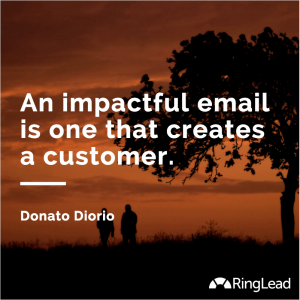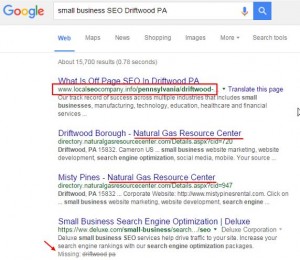
 For decades, marketers dreamt of the day where they could put their message in front of exactly the right audience. By increasing relevance and decreasing waste, they could more effectively sell their product to the people who want or need it.
For decades, marketers dreamt of the day where they could put their message in front of exactly the right audience. By increasing relevance and decreasing waste, they could more effectively sell their product to the people who want or need it.
That day is here.
In today’s mobile-first world, true one-to-one advertising is possible. It takes some work – and a LOT of data – to pull it off, but using today’s tools to access the smartphones in your consumer’s pocket, your clients can reach incredibly specific audiences for whatever campaigns they can imagine.
To understand what types of targeting are possible, it helps to first understand how this type of accuracy is possible.
In the Beginning
For many years, media was a one-way street. Traditional publishers like newspapers, radio and TV stations, magazines, and even direct mail companies used broadcast techniques to take their message (and the message of the advertisers who wanted access to the audience they had built) to market.
While the one-to-many approach was effective at reaching gobs of people all at once, it lacked refinement. It forced companies to create (or at least advertise) the products that appealed to a wide variety of people. Even if companies knew the segment they wanted to reach, publishers didn’t have a good way of delivering it to them.
What was missing was a feedback loop – a stream of information that gave publishers insight into who was watching/listening to their content.
Enter the Internet
The expansion of the Internet not only brought a world of new options to consumers beyond the traditionally mass-marketed products, it also provided publishers with a way to learn about who was consuming the content they were producing.
Desktop-based tracking is traditionally done through cookies inside of a web browser. As a consumer surfs around the web, individual sites are able to collect information about who they are, where they came from, what actions they took while they were on a website, and often times follow them to other web properties.
Over time, this data would be able to build highly robust profiles.
(For a deeper look into the history of online tracking and what privacy looks like in a digital future, check out this episode of FiveThirtyEight’s podcast – What’s the Point?)
Enter Mobile

The concept of targeting (and tracking) on mobile is very similar. However, there are two main differences to note:
- Cookies are not as reliable on mobile web usage (consider that 88% of mobile usage happens inside of apps where cookies are not available).
- Mobile-specific capabilities (such as GPS, etc.) offers even more data signals and, as a result, additional opportunities to target consumers on a highly personalized level.
These factors mean advertisers can reach highly targeted audiences at scale based on:
- where they are and have been (geographically),
- who they are (demographically),
- what they’re doing on their phones (contextually) and
- what they already know about them (existing prospect/customer lists)
Layered Targeting
As you consider all of the targeting options at your disposal, it is important to keep this in mind:
Every layer of targeting you implement means a reduction in available inventory. In other words, the more specific you get – the fewer people in your segment.
Let’s put this theory into action. Consider each of the following segments:
- Males
- Age 24-28
- Likes video games, XBOX, PlayStation, or Call of Duty
- Owns a Labradoodle
- Makes over $ 475,000 per year
- Is a descendant of Abraham Lincoln
- Currently within a 1.5-mile radius of the Empire State Building
For a video game store in Manhattan, stringing together Options 1, 2, 3, and 7 would make for a well-optimized, highly relevant audience with a good amount of inventory. There are lots of young guys in NYC who fit those criteria.
But consider what happens when we add Option 4 or 5 to the mix. The pool of video game enthusiasts who ALSO own a labradoodle is a lot smaller. The same goes for Option 5. How many 26 year-olds do you know that make half a million dollars a year?
(For the record, we can’t target Lincoln’s great-great-grandkids. But you already knew that, right?)
The Nitty Gritty
That’s mobile audience targeting in a nutshell. However, we’ve only just scratched the surface of what’s possible with mobile advertising.
Keep an eye out for Part 2 of this series on mobile audience targeting, where we break down such methods as geographical (namely geofencing and geofarming), demographical, and contextual.
It gets pretty crazy.
Digital & Social Articles on Business 2 Community
(149)








